
When Typhoon Haiyan (or Yolanda, as it was called here) hit the center of the 7100 islands which constitute the Philippines nation, we had just arrived in Manila in the far north on the island of Luzon. While increasingly dire forecasts of the storm’s power dominated newspapers and TV broadcasts, we waited to see what would happen.
The impact around us was limited, to say the least. Manila was merely overcast for the first few days as we awaited the storm. On the day the typhoon struck, the lake surrounding Taal volcano, about 65 kilometers south of Manila, was briskly wind-whipped during our visit, but the skies were as sunny as much as they were overcast.
While the typhoon smashed up the eastern town of Tacloban on Leyte Island, Luzon saw intermittent light rains which yielded to bright blue sunny skies as it passed. Unlike an earlier typhoon that hit the north around us, sweeping away roofs and uprooting huge trees, the only effect we saw this time was a preparatory one: highway billboards, which are printed on large plastic sheets and affixed to metal structures beside the road, were neatly rolled up at the base of the scaffolding to protect them.
Even Cebu City on Cebu Island, the second largest metro area of the country and the place where most journalists weathered the storm, escaped with little damage – partly because it was south of the worst of the storm and partly because Cebu is sheltered by the hard hit islands to the east.
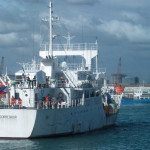
When we went to Cebu a week after the typhoon, we flew by a seemingly unhurt coastline, past fish farms in the large bay with retaining walls unharmed and port areas still operating, and landed at a fully functional airport, then crawled in traffic along several waterways and coastal towns where few signs of damage appeared. When we looked very carefully, we saw a few skewed signs over storefronts, along with some peeled back roof panels on corrugated tin shacks and open air markets. We did notice, however, a large number of cargo planes from KLM and other airlines on the Cebu airport tarmac, as well as unmarked military troop carriers, all waiting to deliver supplies elsewhere. That was the reason, according to Philippines Airlines, that we had arrived late: slowdowns in normal traffic due to the airlift activities.
The disconnectedness from the hardship was a bit surreal. We were reading and hearing horrific reports from the center of the country, while 600 to 800 kilometers away in Manila all was calm. Even a storm of that size doesn’t reach so far.
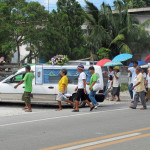
And, of course, much of the daily frenzy of life in the large cities we saw – Manila, Cebu, Baguio – just continued as usual: the impassable traffic jams of trucked goods and commuters, the getting and spending in the business districts and the malls, daily religious services and necessary funerals. Daily life continued completely independent of what had just happened elsewhere.
And it’s the sprawling fragmentation of the islands, as well as a population dispersed among rural areas, that further masks the impact. Even the first week’s reporting after the typhoon concentrated on just Tacloban, and its hard-hit quarter million people. Remoter towns and outlying areas escaped public notice – and to some extent still do as of this writing.
Of course, the effect was very real for those directly battered by the storm. Reports estimate that 10% of the population, or 10 million people, were directly affected. In the United States, that would mean severe hardships for 35 million, or nearly the population of California.
So it was heartening to see examples, around the edges of normal life, of how Filipinos reached out to their fellow countrymen – at the churches, where many offered prayers and collected aid; at television screens, where people tried to keep up with the news and learn of ways to help; in the course of everyday conversation, where people we met expressed their hope for relief and their sadness for the misery. It turns out that many people now in Manila and metropolitan Cebu have come from areas that were hard hit. So their fellow feeling for their countrymen comes from a sense of community and familial bonds.
One of our guides even shared with us his crisis of cultural faith, as reports of store lootings and other mayhem emerged from Tacloban. “That’s not like us,” he noted sadly, though acknowledging the horrific conditions. We understood, for we have seen how civility and discipline are central to Filipino culture: Manilans form lengthy queues at ATMs on Friday night, patiently waiting their turn; in the northern city of Baguio, the lines to get on public busses snake peacefully along the sidewalks for a block or two.
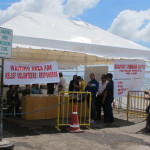
We’ve read about the donations by large organizations and family run charities, who have also become conduits for collections from others. We’ve seen smaller efforts by local churches like that in the Ermita district of Manila to gather food and clothing, and found modest piles of gathered bundles within hotels, malls, and other public places.
So many people in Manila and Cebu City tried to volunteer through aid organizations that a waiting list of a week or more was the norm, unless you offered special skills. That’s why we weren’t able to help out even though we tried to volunteer.
Even the poor reached out, as we observed in the tiny town of Panagsama on the west coast of Cebu Island. This village consists mainly of concrete block shacks and tiny convenience stores adjoining other shacks along a narrow road. Though unaffected directly, the typhoon victims were relatively near, at the north end of the island less than 200 kilometers away. Malapascua Island up there, where we would have been if our trip started a week earlier, was 95% destroyed, though miraculously with no loss of life.
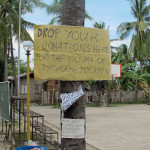
But back in Panagsama, on trees and lamp posts, notices invited the poor population (where $5, or 200 pesos per day is a good wage) to give to the victims in the direct path of the typhoon. At the town hall, an elongated stucco barracks-like building, a large number of bags filled with clothing and foodstuffs had accumulated, awaiting distribution.
Others on Cebu are responding in kind. A waitress at one resort near Panagsama fretted about how to help members of her extended family still suffering deprivation up north, even while, divorced and living with her parents so they can care for her child, she earned the typical low wage here.
A manager of another resort had already sent an advanced party north to Bantayan Island to identify the area with the least support, those most in need of truckloads of supplies. Just as necessary, they found, were wood and other materials to rebuild the community’s broken fishing vessels, shallow boats with outrigger poles called barcas. Those supplies will now go north on her trucks as well. Amazingly, she also planned to give over her acre of property nearby so that many of the dispossessed in the north could live and rebuild their lives. Similarly, one woman we met with parents in Bantayan said she had fretted all week before the typhoon hit, and then recently arranged to send construction materials – “a lot of nails” – so they and their neighbors could rebuild their homes.
The tragedy of Typhoon Haiyan is the ongoing suffering of those whose lives were upended by the storm. It took a week for significant aid to reach the cities, even longer to spread up the coastal areas. And even as we write, people who are inland within rural areas are still inaccessible, relatively ignored and deprived of assistance. There are a lot of reasons for this, which the media have reported and critiqued.
But we have observed how the hearts of their Filipino countrymen at least continue to reach out in charity and care.
(Also, for more pictures from the Philippines, CLICK HERE to view the slideshow at the end of the Philippines itinerary page.)


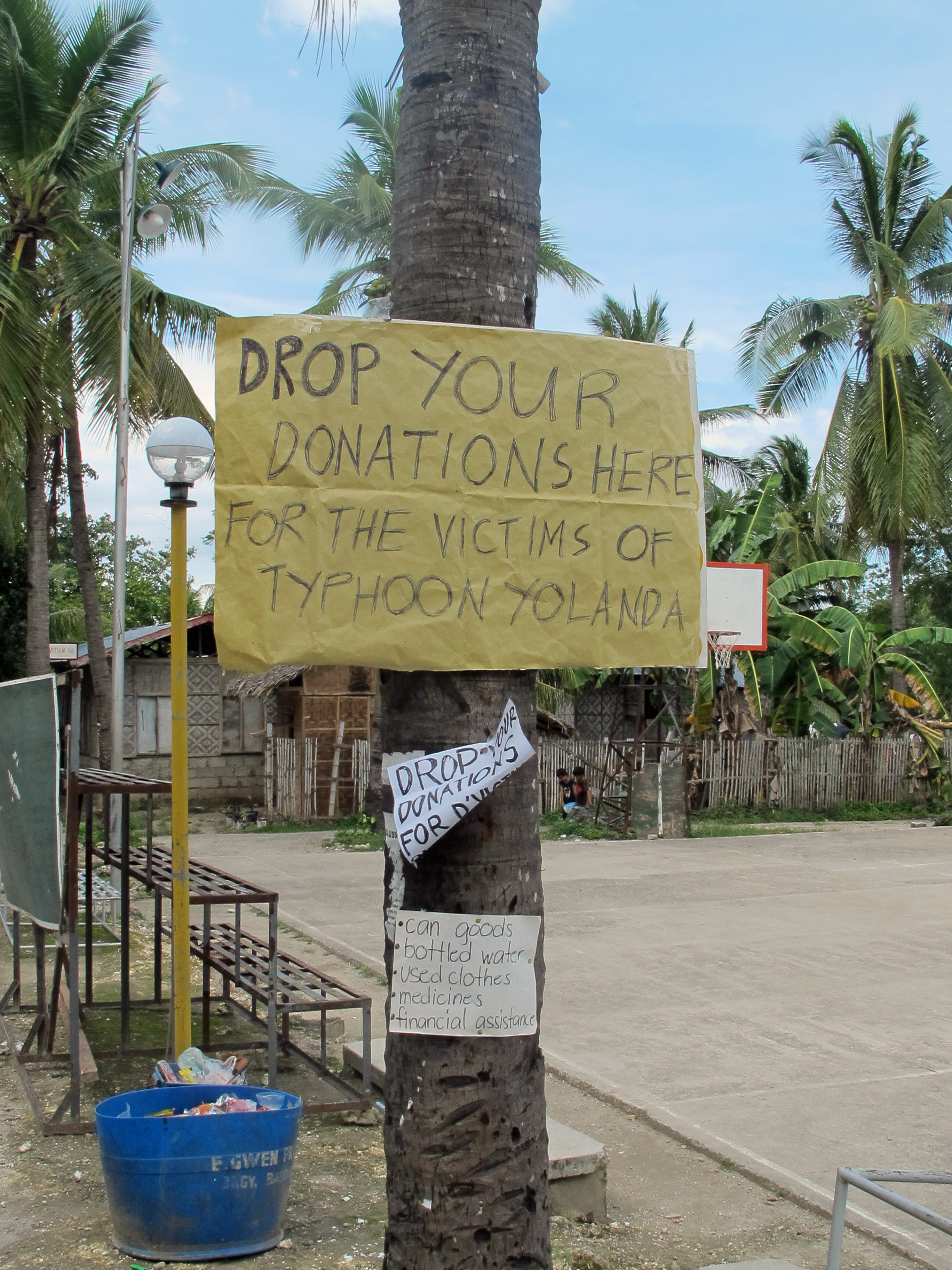
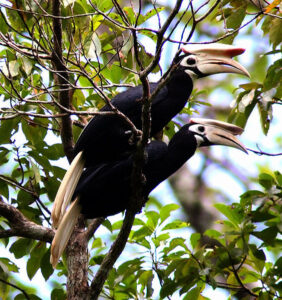
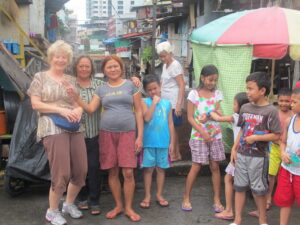
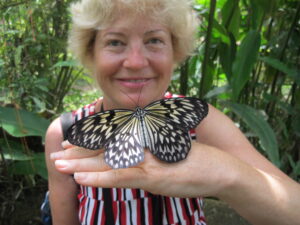
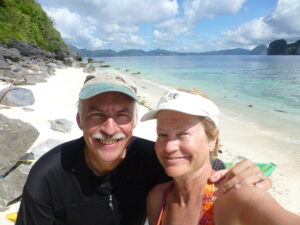
interesting account, thanks